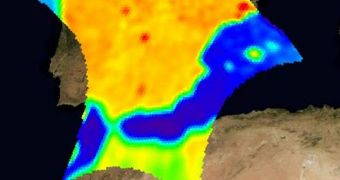Officials with the European Space Agency (ESA) say that their efforts of reducing the amount of interference their advanced SMOS satellite is subjected to are finally beginning to pay off.
The Soil Moisture and Ocean Salinity (SMOS) mission is one of the most sensitive spacecrafts ever sent to Earth's orbit, and it was supposed to communicate with its controllers in a protected band.
However, soon after the instrument was launched, mission specialists found out that their attempts at communicating with the satellite were botched by interferences from the most diverse sources.
They detected radio, radar and TV transmissions overlapping SMOS' band, and therefore had difficulties operating the expensive satellite. But ESA immediately began efforts to fix this issue.
RFI contamination is extremely detrimental for satellite communications, because it usually destroys only a part of the transmission, which means that the data sent back to Earth via telemetry become useless.
In some instances, researchers found that the spacecraft could not send any data at all, so that certain areas of globe could not be covered by its instruments.
Engineering teams soon realized that there was nothing wrong with the hardware or software parts of the mission, given that SMOS performed wonderfully in RFI-free areas.
Though the in International Telecommunications Union reserved the 1400–1427 MHz band for scientific studies, a lot of RFI was found overlap this portion of the electromagnetic spectrum.
The largest amount of interferences was recorded in coastal areas, in southern Europe, Asia, and in the Middle East, ESA reports in a press release.
The space agency had no other option in rectifying the situation than start to slowly but surely shut down the illegal transmissions overlapping the satellite's telemetry.
Their efforts are made easy because the SMOS data can indicate, with an accuracy of a few kilometers, the area where the pirate signals originate.
Several National Spectrum Management Authorities have already been contacted, so as to take care of the problem in their respective countries.
At this point, ESA is saying that these endeavors are successful, and that, pretty soon, the SMOS mission will be able to provide global coverage, as initially intended.

 14 DAY TRIAL //
14 DAY TRIAL //